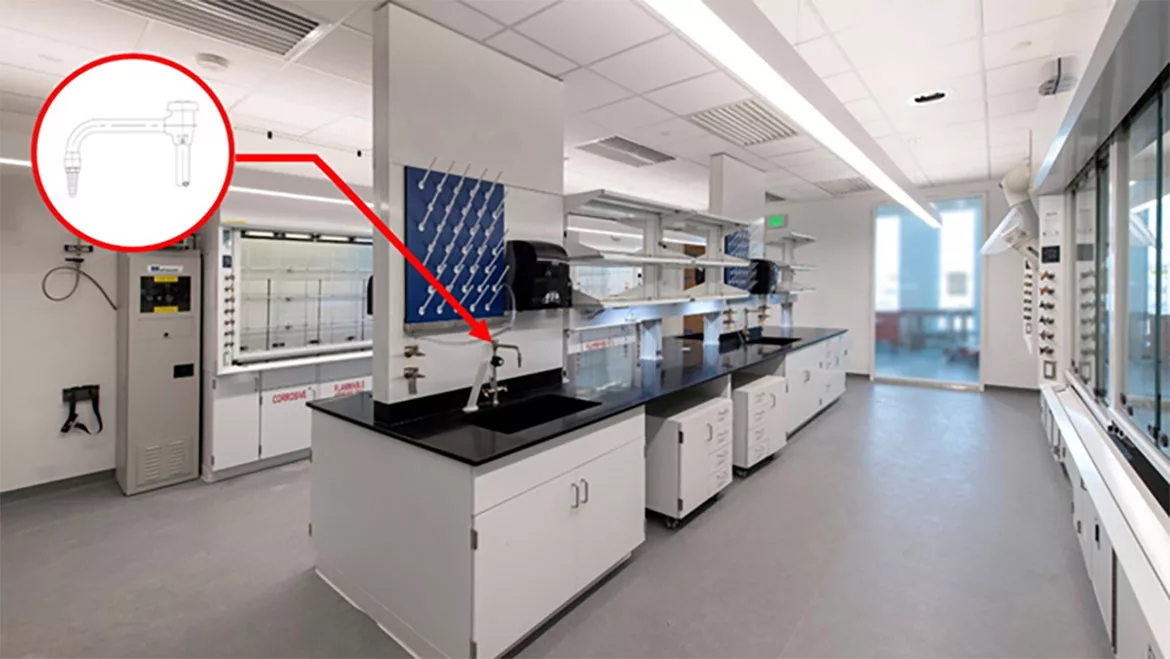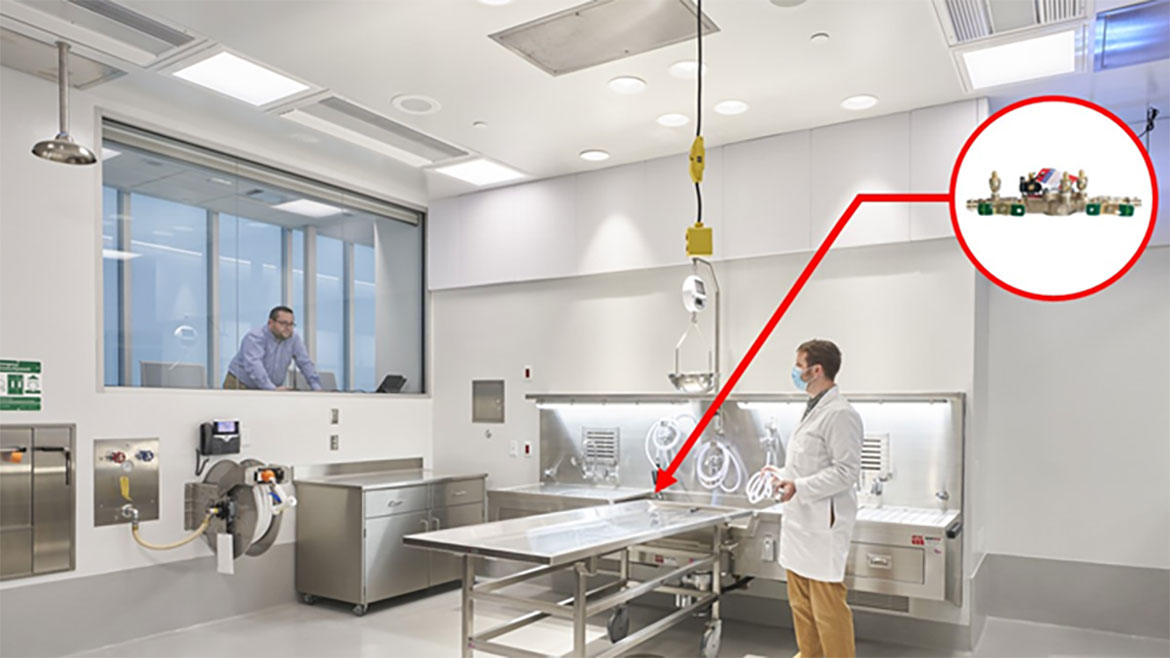Plumbing Essentials — Design Approaches, Codes and Everything in Between | Lowell Manalo
Backflow preventers in research and laboratory buildings
Protecting people or equipment? Or both?

Laboratory faucet with vacuum breaker. Image courtesy of SmithGroup
Reduced-pressure backflow preventers are provided at buildings to protect the public main water supply from potential contamination from any building or private property on their system. Public safety is the primary concern, which is why the building's main backflow is required by code and the Authority Having Jurisdiction (AHJ).
When designing laboratories and research buildings, it is not uncommon to see different types of backflow preventers provided on the building water supply in addition to the main building backflow. These local backflow preventers perform the same function as that of their main building counterparts, protecting the building’s water supply from potential contamination from laboratory or research areas. Plumbing engineers and designers need to pay extra attention to these devices.
Note that we will not address the different types of backflow preventers in this column, as there are numerous resources available for the different backflow preventer types. The intent, instead, is to highlight a few examples of the approaches typically available for laboratory and research buildings.
So, when do you need to provide additional backflow preventers for research and laboratory buildings, and what types? Designers and engineers can start with multiple steps. Looking at the building program — are there any chemicals or processes with a high risk of contamination? Are there any local AHJ requirements? Does the building follow a specific design standard that requires backflow preventers regardless of the risk? Knowing this information helps engineers and designers develop a plan on what devices and systems to provide. Also, understanding these requirements can help during the construction phase, defending removal from value engineering (VE) or cost-cutting measures.
Vacuum breakers prevent back-siphoning when negative pressure is present in any piping or hoses from lab sinks.
Below are a few examples of design approaches that a laboratory or research building may have to address potential contamination concerns within the building.
Separate laboratory hot and cold-water systems. This is one of the safest approaches in isolating the laboratory water from the building's domestic water mains. Where the main building backflow protects the public water outside of the building, the backflow provided for the laboratory hot and cold-water systems protects the domestic water and staff within the building outside of the laboratory.
Laboratory faucets with vacuum breakers are an economical solution for laboratory facilities. Local vacuum breakers at lab sinks work the same as the irrigation valves at residential houses. Vacuum breakers prevent back-siphoning when negative pressure is present in any piping or hoses from lab sinks. While not as comprehensive as the system-wide backflow preventers, they are nonetheless effective at preventing backflow at system connections. Refer to Image 1 below for a typical installation.
Below are some specific approaches depending on the building function and system hazards.
Medical Examiner autopsy sinks/table. Medical examiner's facilities do not usually use separate laboratory water systems as the laboratory function is minimal. Medical examiner facilities conduct autopsies to investigate and determine the cause of death, and may use fluids and substances in the process of examination. Given the application and unknown nature of death, extra precautions are used to prevent the fluids using autopsies from contaminating the water supply. The autopsy table is usually provided with an integrated reduced-pressure backflow preventer mounted in an accessible location at the back of the sink. Refer to Image 2 below for a typical backflow preventer installation at an autopsy table.

Biosafety Labs Level 3 (BSL-3) laboratories are laboratory spaces requiring a high-level containment requirement due to the potentially lethal agents located inside the space. The National Institutes of Health (NIH) Design Requirements Manual (DRM) requires the laboratory, tepid and domestic water serving any emergency fixtures within a BSL-3 space that shall be provided with an ASSE 1015 compliant double-check valve type backflow preventer. Redundant (or N+1) equipment is required when serving multiple BSL-3 spaces. If a BSL-3 room is being served directly from domestic potable water in lieu of laboratory non-potable water, dual ASSE 1013 reduced pressure zone backflow preventers shall be required to ensure the domestic water systems are protected at all times.
Knowing the specific laboratory and research facility programs and processes planned can aid in understanding where and what type of backflow devices are needed. Compliance with the local jurisdiction code regarding safeguarding the public water and the building occupants is necessary. However, engineers and designers must also understand that in laboratory or research settings, backflow prevention may not be just for people's safety, but is sometimes also required to prevent the contamination of valuable experiments done in research. Dialog with lab users in the design phase not only aids with overall understanding of the work done, but can identify these special cases as well.
Looking for a reprint of this article?
From high-res PDFs to custom plaques, order your copy today!








